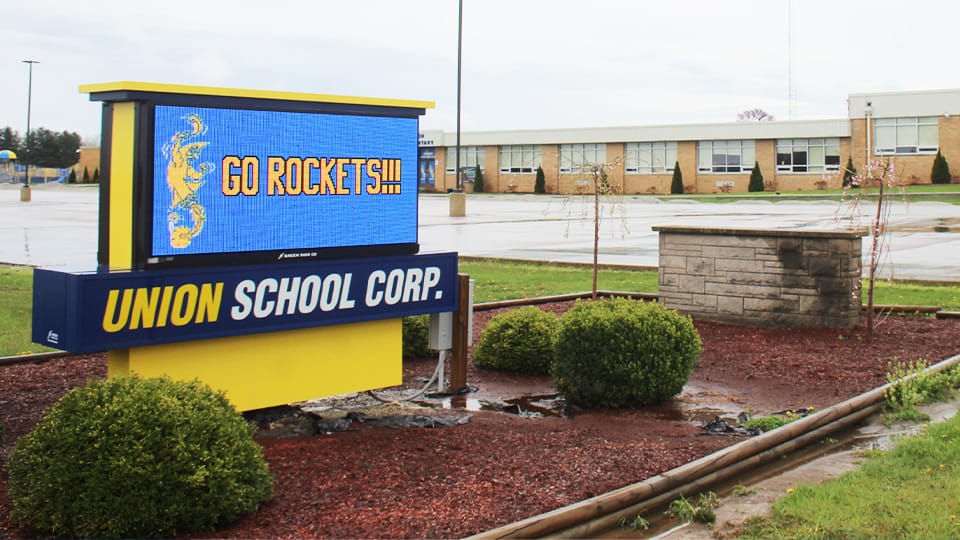Spencer County Comprehensive Economic Development Strategy (CEDS) Report
Introduction: A Unified Vision for Sustainable Growth
Spencer County has initiated a new Comprehensive Economic Development Strategy (CEDS), a five-year plan designed to foster cohesive and sustainable growth across the region. Developed in partnership with the Indiana Uplands/Radius Indiana and with guidance from the Indiana Economic Development Corp. (IEDC), this strategy represents a collaborative effort among the county’s diverse communities, including Dale, Santa Claus, Rockport, Grandview, Chrisney, and Gentryville. The CEDS is fundamentally aligned with the United Nations Sustainable Development Goals (SDGs), aiming to create a resilient, inclusive, and prosperous future for all residents.
Strategic Alignment with Sustainable Development Goals (SDGs)
The Spencer County CEDS is intentionally structured to address several key SDGs. This framework ensures that economic progress is balanced with social equity and environmental stewardship. The primary goals addressed include:
- SDG 4: Quality Education – Enhancing workforce development and lifelong learning opportunities.
- SDG 8: Decent Work and Economic Growth – Promoting sustained, inclusive, and sustainable economic growth, full and productive employment, and decent work for all.
- SDG 9: Industry, Innovation, and Infrastructure – Building resilient infrastructure, promoting inclusive and sustainable industrialization, and fostering innovation.
- SDG 11: Sustainable Cities and Communities – Making cities and human settlements inclusive, safe, resilient, and sustainable.
- SDG 17: Partnerships for the Goals – Strengthening the means of implementation and revitalizing the global partnership for sustainable development.
Core Strategic Pillars and SDG Integration
Pillar 1: Economic Growth and Innovation
This pillar focuses on strengthening the county’s economic base through innovation and support for key industries, directly contributing to SDG 8 and SDG 9.
- Fostering Advanced Manufacturing: Support the growth of pioneering companies like Thermwood Corp., a leader in large-scale additive manufacturing. This promotes high-tech industrialization and creates skilled employment opportunities.
- Business Retention and Expansion: Implement programs to support existing businesses, ensuring they have the resources to grow sustainably within the county.
- Promoting Entrepreneurship: Cultivate a supportive ecosystem for new businesses and startups to drive economic diversification and innovation.
Pillar 2: Infrastructure and Community Development
Developing resilient infrastructure and fostering sustainable communities are central to this pillar, aligning with SDG 9 and SDG 11.
- Infrastructure Modernization: Prioritize investments in essential infrastructure, including transportation networks, utilities, and broadband access, to support economic activities and improve quality of life.
- Sustainable Community Planning: Encourage coordinated planning across the county’s towns to manage growth, protect natural assets, and enhance public spaces.
- Housing Development: Address the need for diverse and affordable housing options to attract and retain a skilled workforce, making communities more inclusive and sustainable.
Pillar 3: Quality of Life and Workforce Development
This pillar aims to enhance the well-being of residents and build a skilled workforce, which is crucial for achieving SDG 4 and contributing to SDG 3 (Good Health and Well-being) and SDG 10 (Reduced Inequalities).
- Workforce Training Programs: Collaborate with educational institutions and industry partners to develop training programs that align with the needs of the local economy, ensuring access to quality education and skills development.
- Enhancing Community Assets: Invest in quality-of-life amenities such as parks, recreational facilities, and cultural attractions like the Lincoln Discovery Trail to create vibrant and attractive communities.
- Talent Attraction and Retention: Develop and promote Spencer County as an ideal place to live, work, and invest, focusing on its unique strengths and high quality of life.
Collaborative Framework and Implementation
Key Stakeholders and Partnerships (SDG 17)
The success of the CEDS hinges on a robust partnership model, exemplifying SDG 17. The strategy was developed through a multi-stakeholder process involving a steering committee with representatives from across the county. Key partners include:
- Spencer County Economic Development
- Radius Indiana
- Indiana Economic Development Corp. (IEDC)
- Municipal governments of Dale, Santa Claus, Rockport, and others
- Local business leaders and community organizations
This collaborative framework ensures that the development strategy is comprehensive, widely supported, and effectively implemented to achieve its long-term sustainable development objectives.
SDGs Addressed in the Article
-
SDG 6: Clean Water and Sanitation
The article mentions the company’s commitment to water sustainability, specifically a goal to become “water positive” by returning more water to the community than it consumes. This directly relates to the sustainable management of water resources.
-
SDG 7: Affordable and Clean Energy
The development plan includes powering the new data center campus with renewable energy, which aligns with the goal of increasing the share of clean energy.
-
SDG 8: Decent Work and Economic Growth
The central theme of the article is a major economic investment ($11 billion) that is projected to create a significant number of new jobs (“up to 1,000 jobs”), fostering local economic growth and employment.
-
SDG 9: Industry, Innovation, and Infrastructure
The article details the construction of a large-scale, modern “data center and power generation campus.” This represents a significant investment in resilient, innovative, and technological infrastructure.
-
SDG 11: Sustainable Cities and Communities
The project’s impact on the local community is highlighted, including strengthening the local economy and providing tax revenues that will support “local schools and other community improvements.” This connects to creating inclusive and sustainable communities through planned development.
-
SDG 17: Partnerships for the Goals
The project is described as a collaborative effort between a private corporation (Amazon Web Services), a local government body (Spencer County), and a state agency (Indiana Economic Development Corporation), exemplifying a public-private partnership to achieve development goals.
Specific SDG Targets Identified
-
SDG 6: Clean Water and Sanitation
- Target 6.4: By 2030, substantially increase water-use efficiency across all sectors and ensure sustainable withdrawals and supply of freshwater. The company’s goal to be “water positive” by 2030 directly supports this target by focusing on efficiency and returning water to the community.
-
SDG 7: Affordable and Clean Energy
- Target 7.2: By 2030, increase substantially the share of renewable energy in the global energy mix. The plan to power the new campus with renewable energy contributes directly to this target.
-
SDG 8: Decent Work and Economic Growth
- Target 8.2: Achieve higher levels of economic productivity through diversification, technological upgrading and innovation. The development of a high-tech data center represents a move towards a more innovative and technologically advanced economy for the region.
- Target 8.5: By 2030, achieve full and productive employment and decent work for all women and men. The creation of 1,000 jobs is a direct contribution towards this employment goal.
-
SDG 9: Industry, Innovation, and Infrastructure
- Target 9.1: Develop quality, reliable, sustainable and resilient infrastructure… to support economic development and human well-being. The $11 billion data center campus is a prime example of developing new, resilient infrastructure to support the digital economy.
-
SDG 11: Sustainable Cities and Communities
- Target 11.a: Support positive economic, social and environmental links between urban, peri-urban and rural areas by strengthening national and regional development planning. This project demonstrates regional development planning that links a major corporate investment with the economic and social improvement of a rural county.
-
SDG 17: Partnerships for the Goals
- Target 17.17: Encourage and promote effective public, public-private and civil society partnerships. The collaboration between AWS, Spencer County, and the Indiana Economic Development Corporation is a clear example of the public-private partnership model this target promotes.
Indicators for Measuring Progress
-
SDG 6: Clean Water and Sanitation
- Indicator (Mentioned): The company’s specific, measurable goal to be “water positive by 2030” serves as a direct indicator. Progress can be measured by tracking the volume of water consumed versus the volume of water returned to the community.
-
SDG 7: Affordable and Clean Energy
- Indicator (Implied): The share of renewable energy in the facility’s total energy consumption. Progress would be measured by the percentage of the campus’s power that is sourced from renewables.
-
SDG 8: Decent Work and Economic Growth
- Indicator (Mentioned): The number of jobs created, stated in the article as “up to 1,000 jobs.”
- Indicator (Mentioned): The total value of the investment, which is “$11 billion,” serving as an indicator of economic stimulus.
-
SDG 9: Industry, Innovation, and Infrastructure
- Indicator (Implied): Investment in infrastructure, measured by the project’s total cost of $11 billion.
-
SDG 11: Sustainable Cities and Communities
- Indicator (Implied): The amount of additional tax revenue generated by the project that is allocated to “local schools and other community improvements.”
-
SDG 17: Partnerships for the Goals
- Indicator (Implied): The dollar value of public-private partnerships for infrastructure, which is the $11 billion investment figure.
Summary of Findings
| SDGs | Targets | Indicators |
|---|---|---|
| SDG 6: Clean Water and Sanitation | 6.4: Increase water-use efficiency and ensure sustainable withdrawals. | The corporate goal to be “water positive by 2030.” |
| SDG 7: Affordable and Clean Energy | 7.2: Increase the share of renewable energy. | The share of the facility’s power sourced from renewable energy. |
| SDG 8: Decent Work and Economic Growth | 8.2: Achieve higher economic productivity through technological upgrading. 8.5: Achieve full and productive employment. |
Total capital investment ($11 billion). Number of new jobs created (1,000). |
| SDG 9: Industry, Innovation, and Infrastructure | 9.1: Develop quality, reliable, sustainable and resilient infrastructure. | Total investment in new infrastructure ($11 billion). |
| SDG 11: Sustainable Cities and Communities | 11.a: Support positive economic and social links by strengthening regional development planning. | Increased tax revenue allocated to schools and community improvements. |
| SDG 17: Partnerships for the Goals | 17.17: Encourage and promote effective public-private partnerships. | The dollar value of the public-private partnership ($11 billion). |
Source: insideindianabusiness.com







